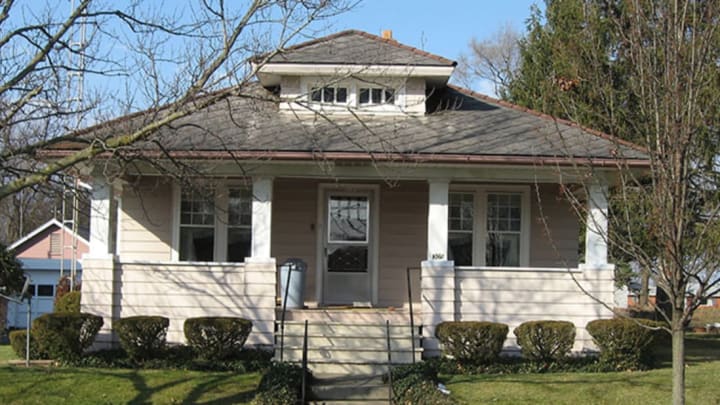At one point in history, you could get just about anything courtesy of the Sears catalog—even a home, as Popular Mechanics reports.
Between 1908 and 1940, Sears, Roebuck and Co. sold prefabricated houses through its Modern Home catalogs, shipping somewhere between 70,000 and 75,000 homes in a variety of designs across America. (The one pictured above is located in Ohio.)

Sold between 1908 and 1914, Model No. 52 went for $782 to $1995. Today, that would be about $19,000 to $48,000.
While some of these mail-order houses were basic cottages—one of the cheapest early models cost only $782, the equivalent of about $19,000 today—the Sears Modern Home catalog also sold higher-end, customizable options with hardwood floors, wood siding or brick, and various colors of cabinetry inside.
The catalog homes—available in 447 different styles—offered new modern conveniences like electric wiring, bathrooms, asphalt roof shingles, and central heating for a relatively low price, thanks to the company’s ability to mass produce parts. The materials were shipped by train precut, and included everything needed to assemble a house, including the nails. And the houses were built to last—plenty of people have written in to the Sears archives to report that they live in Sears Modern Homes almost a century after the houses were built.

The Malden (Model No. 3721) cost $2641 in the period between 1933 and 1940. In 1933, $2600 was about the equivalent of $48,000 today.
Sears wasn’t the only mail-order company in the housing business. Montgomery Ward also sold pre-cut house materials and plans from 1909 to 1932.
More recently, prefabricated construction has been heralded as the future of affordable, eco-friendly housing (including high-rises), since it’s easier to cut down on waste when materials are cut in a factory compared to traditional on-site construction. Still, today's prefab home construction isn't ready to become the housing revolution some architectural boosters predicted. Transporting homes can be expensive, and some prefab housing developments have run into design flaws and technological roadblocks. In comparison, getting your home straight from a Sears catalog sounds pretty good.
[h/t Popular Mechanics]
All images courtesy the Sears Archives unless otherwise noted.
